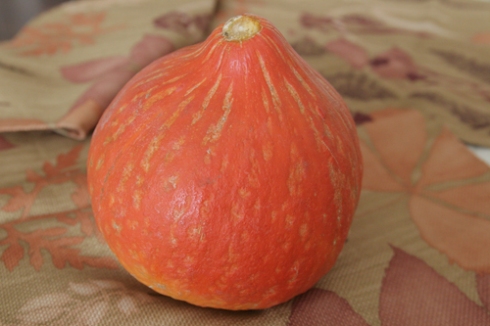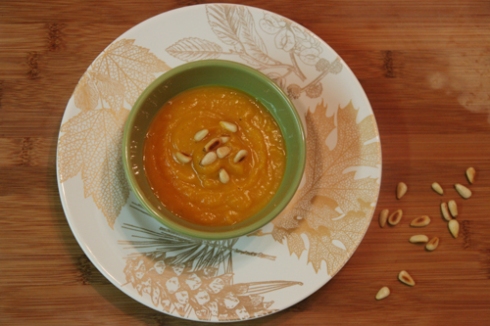“Nothing will benefit human health and increase chances for survival of life on Earth as much as the evolution to a vegetarian diet.”
-Albert Einstein
 Aside from being cruel to animals, the grand-scale farming practices of today are destroying the earth. A few stats for you, courtesy of Peta:
Aside from being cruel to animals, the grand-scale farming practices of today are destroying the earth. A few stats for you, courtesy of Peta:
*According to the United Nations, raising animals for food (including land used for grazing and land used to grow feed crops) now uses a staggering 30 percent of the Earth’s land mass. More than 260 million acres of U.S. forest have been cleared to create cropland to grow grain to feed farmed animals, and according to scientists at the Smithsonian Institution, the equivalent of seven football fields of land is bulldozed worldwide every minute to create more room for farmed animals.
*Raising animals for food is grossly inefficient. While people around the world are starving, more than 70 percent of the grain and cereals that we grow in this country are fed to farmed animals. It takes up to 16 pounds of grain to produce just 1 pound of meat, and even fish on fish farms must be fed up to 5 pounds of wild-caught fish to produce 1 pound of farmed fish flesh.
*It takes more than 2,400 gallons of water to produce 1 pound of meat, while growing 1 pound of wheat only requires 25 gallons. You save more water by not eating a pound of meat than you do by not showering for six months! A totally vegan diet requires only 300 gallons of water per day, while a typical meat-eating diet requires more than 4,000 gallons of water per day.
*It takes more than 11 times as much fossil fuel to make one calorie from animal protein as it does to make one calorie from plant protein.
*According to Greenpeace, all the wild animals and trees in more than 2.9 million acres of the Amazon rain forest in Brazil were destroyed in the 2004-2005 crop season in order to grow crops that are used to feed chickens and other animals in factory farms.
*According to the Environmental Protection Agency (EPA), the runoff from factory farms pollutes our waterways more than all other industrial sources combined. There are no meaningful federal guidelines that regulate how factory farms treat, store, and dispose of the trillions of pounds of concentrated, untreated animal excrement they produce each year. This waste may be left to rot in huge lagoons or sprayed over crop fields; both of these disposal methods result in runoff that contaminates the soil and water and kills fish and other wildlife. The concentration of parasites, bacteria, and chemical contaminants in animal excrement can wreak havoc on the ecosystems affected by farm runoff and can sicken people who live near these farms.
*Many of the millions of pounds of excrement and other bodily waste produced by farmed animals every day in the U.S. are stored in sprawling, brown lagoons. These lagoons often seep or spill into surrounding waterways and kill massive numbers of fish and other animals. The massive amounts of feces, fish carcasses, and antibiotic-laced fish food that settle below fish farm cages also contribute to water pollution and have actually caused the ocean floor to rot in some areas.
*A Consumers Union study in Texas found that animal feedlots in the state produce more than 14 million pounds of particulate dust every year and that the dust “contains biologically active organisms such as bacteria, mold, and fungi from the feces and the feed.” The massive amounts of excrement produced by these farms emit toxic gases such as hydrogen sulfide and ammonia into the air.

Responsibility as spirituality – we are all connected.
“This food is the gift of the whole universe – the earth, the sky, and much hard work. May we live in a way that is worthy of this food. May we transform our unskillful states of mind, especially that of greed. May we eat only foods that nourish us and prevent illness. May we accept this food for the realization of the way of understanding and love.”
-The Five Contemplations
Thich Nhat Hanh
Living Buddha, Living Christ
A few years ago, I had the good luck to hear Thich Nhat Hanh speak at USD. The subject of his talk was how to create peace in the world, but for the first half of it, he talked about mindfulness in everyday life. He talked about walking barefoot and feeling the ground under your feet. He talked about eating slowly, with attention, without distractions. He talked about meditation. He spoke softly, and people were leaving the auditorium in droves. But then, almost imperceptibly, his message became exponentially larger. He said that when we eat slowly and contemplate our food, we think about where it comes from, and we touch the suffering of the world. When we eat a cow, we see how that cow suffered. We see the enormous amounts of food and water that were spent to raise it, and all the starving people in the world who do not have food or water. Our awareness then informs our choices.
His call was for personal responsibility, and many people missed the message. I think that’s a good illustration for the world at large. Most change happens slowly, in small ways, and it begins with you and me.

Vegan Butternut Squash Chili
Recipe Source: Adapted from Gluten-Free Goddess
This chili is a much more colorful and varied version of the typical meat-and-beans version you may be used to. It’s also a bit on the brothy side, kind of a cross between chili and soup.
Personally, I felt it was a bit too sweet, especially considering that the fire-roasted tomatoes and butternut squash add a little natural sweetness of their own. So I’ve omitted the agave nectar and balsamic vinegar from the original recipe, and doubled the spices. I used a poblano pepper and then ended up dumping in some Tabasco, so a combination of peppers (maybe poblano + jalapeno?) might be a good idea. And if you’re not into the heat, of course, you can try it the original way!
I also omitted the celery because I didn’t have any on-hand and don’t particularly like it, and used some fresh ginger to supplement the powdered when I ran out. Next time, I think I’ll use a trio of black, red, and white beans, rather than two cans of black. Basically – there’s a lot going on in this soup, so feel free to experiment!

1 tablespoon neutral-flavored oil
3-6 cloves garlic, to taste, minced
2 teaspoons each: cumin, chili powder, and ginger
1 medium red or white onion, chopped
1 red bell pepper, cored, seeded, diced
1 green bell pepper, cored, seeded, diced
2 cups butternut squash, cubed
3 cups gluten-free broth
1 (28-oz) can Muir Glen Fire Roasted Whole Tomatoes , diced or broken up, with juice
1 cup chopped green chiles, mild or hot, as you prefer
2 (14-oz) cans black beans , rinsed, drained
1 (14-oz) can white Northern beans , or red kidney beans, rinsed, drained
lime juice, avocado, and cilantro for garnish
Heat the oil in a large pot over medium heat, add the spices, and stir to heat through for a minute. Add onions and stir for 2-3 minutes, then add the remaining ingredients except the lime. Lower the heat, cover, and simmer, stirring occasionally until chili has reached the desired consistency. Add a little more broth if needed, to thin. Cook for an hour or so until all the flavors have combined and the sauce is thickened and rich.
Before serving, squeeze in the juice from half a lime; stir. Taste test for seasoning adjustments – more lime? A pinch of salt? More heat? A touch of agave? You decide.
Serves 8-10.
Tags: bell pepper, fall-winter, gluten-free, lime, soup, squash, vegan, VegWeek2011
 I’ve never seen one of these before, have you?
I’ve never seen one of these before, have you?


 Aside from being
Aside from being 


































